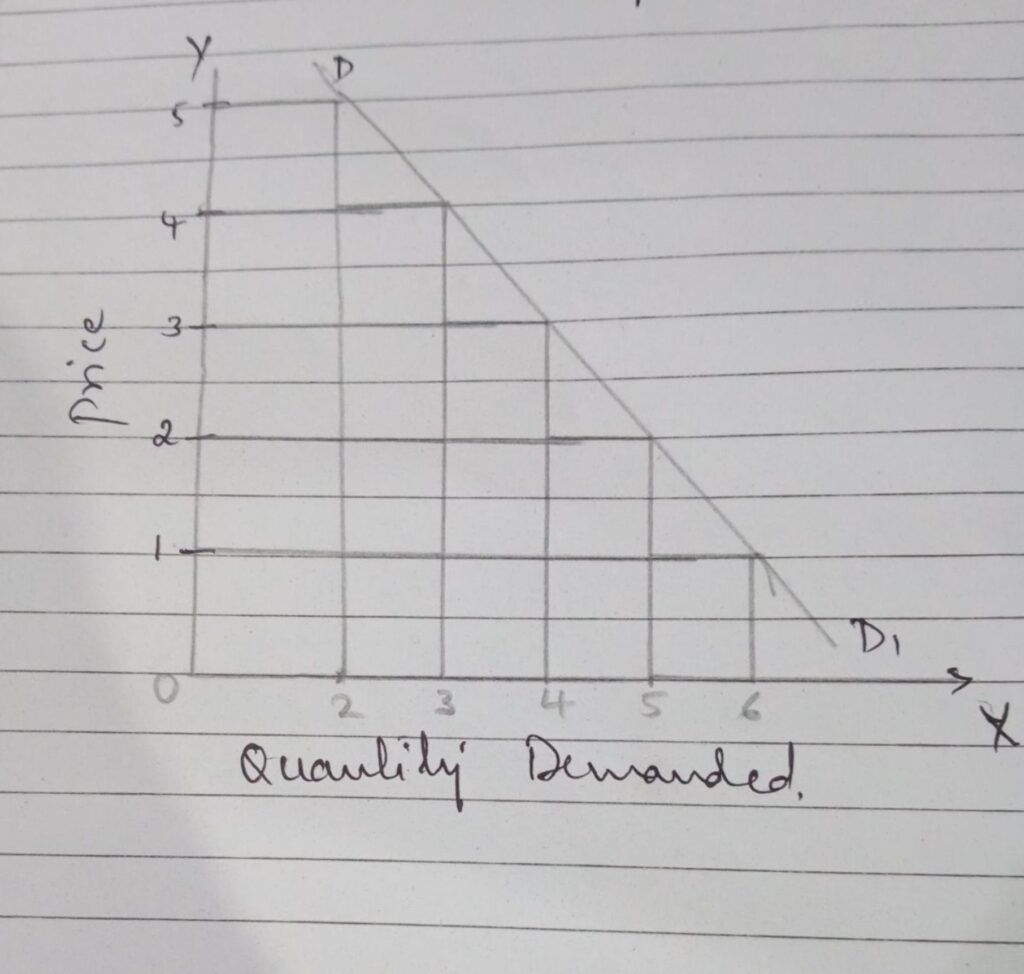Introduction:
The law of demand holds a great importance in economics, before this meaning of demand we learn. The term demand is different from desire, want; wish etc. In economics the term demand has different meaning. Any want or desire will not constitute demand. Demand is not mere desire for a commodity but it is the effectiveness desire for a commodity. It means desire plus willingness and capacity of a consumer towards commodity. Demand refers to the total quantity of a commodity that are purchased by a consumer in the market at a particular price at a particular time. The law of demand depends on various aspects.
Features of the law of demand:
- Inverse relationship: There is an inverse relationship between price and demand
- Price is an independent variable and demand is a dependent variable: in this case we study the effect of price on quantity demanded only.
- Quality statement: It tells us only the direction of change in price and demand but does not indicate the quantity changes in both price and demand.
- Qualifying phrase: The operation of law is condition by the phrase other things being equal it indicates that a law does not have universal application, it indicates only the general tendency of buyers
- Negative slope of the curve: Generally demand curve sloped downward from left to right.
Law of demand:
The law of demand explains the relationship between price and quantity demanded of a commodity. it indicates that demand varies inversely with the price, the law can explain in the following manner, “other things being equal a fall in price leads to expansion in the demand and rise in price leads to contraction in demand” in the words of Bilas, the law of demand states that other things being equal quantity demanded per unit of time will be great, the lower the price and smaller, the higher the price. The law can be expressed in mathematical term as “demand is a decreasing function of a price symbolically D=f(P) where D represent demand P stands for price and F denotes of functional relationship. the law explain the cause and effect relationship between independent variable f and dependent variable P there is no rule that a consumer have to buy more whenever price falls and vice versa. The law explains only the general tendency of consumers while buying a product it does not have universal validity. It is conditional in nature.
The law of demand can be explained with the help of demand schedule the demand schedule explain the functional relation between price quantity variation. it is a list of various amount of a commodity that a consumer is willing to buy at a different price at one instant of time. the following individual demand schedule shows that people buy more when price is low and buy less when prices are high.
| Price in rupees | Quantity demanded in unit |
| 5 | 2 |
| 4 | 3 |
| 3 | 4 |
| 2 | 5 |
| 1 | 6 |

It represents the functional relationship between quantity demanded and price of a given commodity. Generally the demand curve has a negative slope or it slope downwards to the right. The negative slope of the demand curve clearly indicates that quantity demanded goes on increasing as price falls and vice versa.
Assumption of the law:
- Taste and preference customs and habits of consumer should remain constant
- Price of related good should not undergo changes
- Income of the consumer should remain the same
- No substitute would be discover
- Consumer should be anticipate change in prices
- Good should not have prestige value
- No change in government policy Etc.
also read: explain the law of supply.